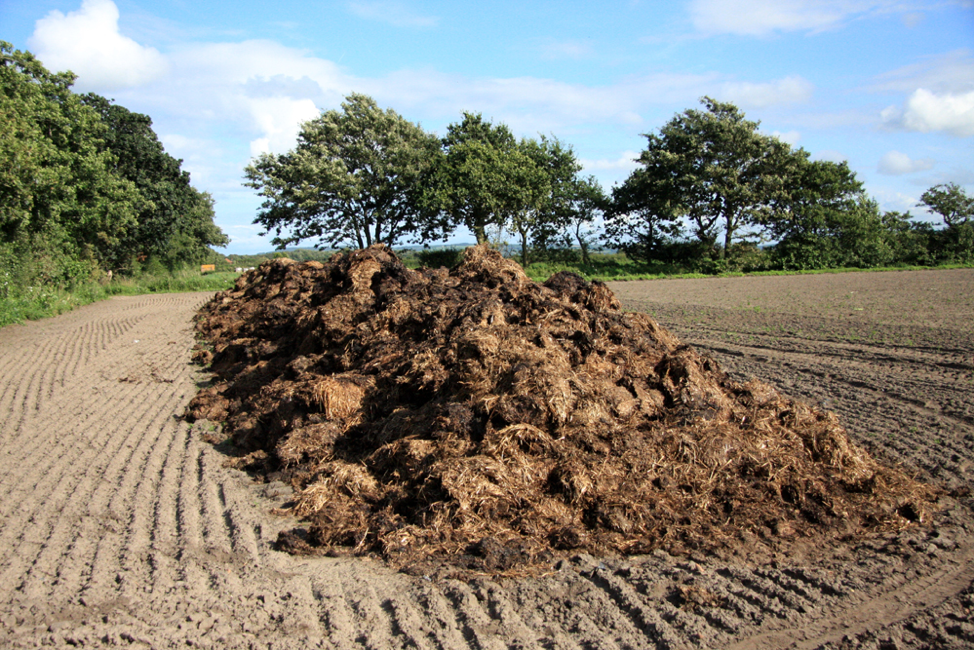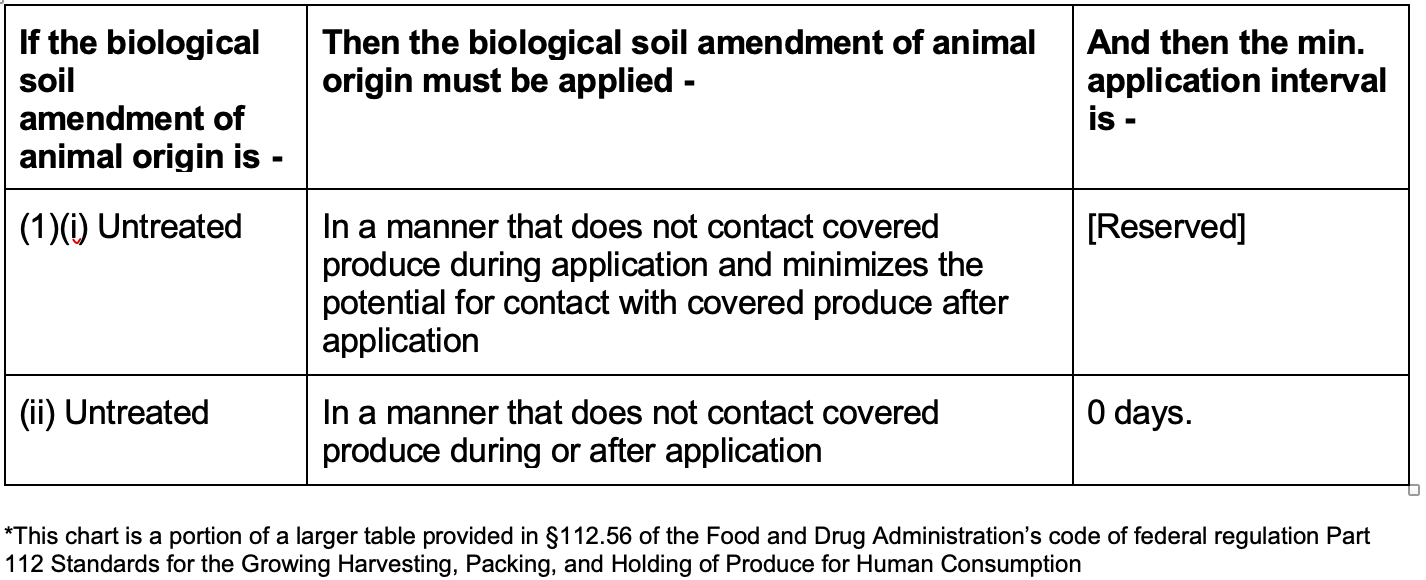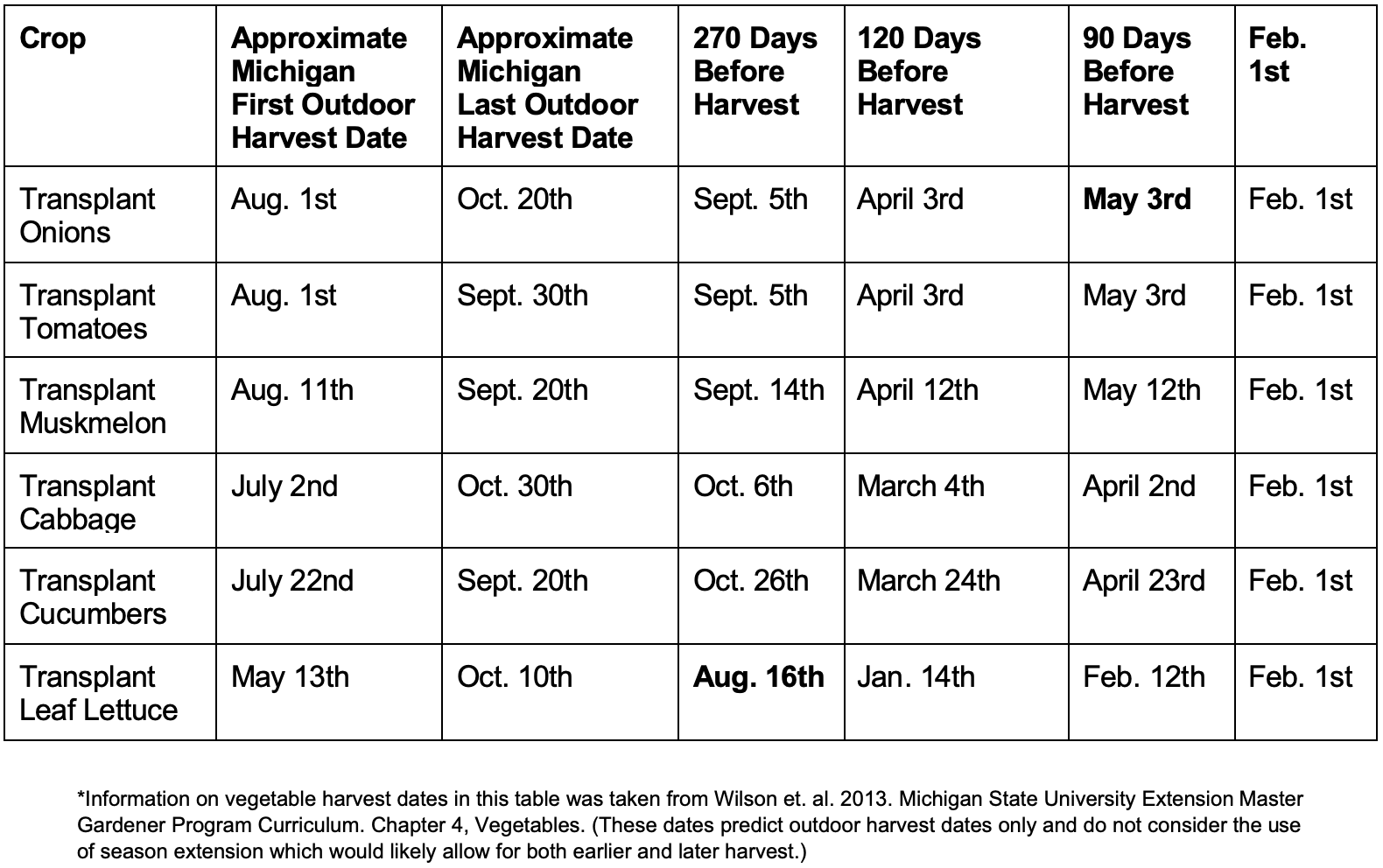Can We Predict Safe Manure Use?

Blue Water Conservation District Produce Safety Technician

Are you a produce grower who uses, or wants to use manure in your produce production? Can you be sure you are using manure safely? Let’s take a look at what the FSMA Produce Safety Rule says about manure use, what the current industry standards are for the use of manure in produce production and how research being done to develop a predictive model for manure application could help us forecast our risk.
What the FSMA Produce Safety Rule says about manure use:
The FSMA Produce Safety Rule provides this information on application and minimum application intervals for untreated biological soil amendments of animal origin. Biological soil amendments of animal origins are a category of soil amendments that includes raw manure.

This table can be confusing. Here is what the FDA is saying:
If you are using an untreated biological soil amendment of animal origin such as manure, and the produce being grown will never come in contact with the applied manure during application or after application, there is a 0 day minimum application interval (a minimum application interval is the amount of time required to wait between the application of manure and the harvest of the produce being grown, often referred to as a pre-harvest interval), meaning manure can be applied up to the day of harvest.
However, if you use that same untreated biological soil amendment of animal origin (manure) and it does not touch produce during application, but produce may come in contact with manure after application, the FDA has listed the requirement as [Reserved]. FDA has not yet decided what the requirement will be.
Originally, the FDA proposed a 9-month minimum application interval for untreated biological soil amendments of animal origin (manure). Growers did not consider that feasible. To determine a more feasible minimum application interval, FDA has dedicated millions of dollars to perform research, which will result in the creation of a predictive model that can predict the survival behavior of the bacteria in manure. The model is expected to be regionally specific to account for varying risk factors. FDA’s research is underway. As we wait for research to be completed and guidance to be developed, what can a grower who uses manure do to manage risk? Currently, the FDA does not discourage the use of the National Organic Program standard of applying raw manure 120 days prior to harvest for crops in contact with the soil, and 90 days prior to harvest for crops not in contact with the soil... Are there other options?
Industry Standards:
Currently, there are a few widely followed minimum application interval standards established by various industry organizations, for the purpose of produce safety, that farmers observe to protect their produce from being contaminated when using manure. In this article, we will look at a few of these standards and assess the potential benefits and obstacles farmers face when choosing which standard to follow. We will also consider what current research says regarding the development of a predictive model and how its’ use will differ from the current standards being used.
Michigan Produce Safety Risk Assessment raw manure use standard - Manure must be soil incorporated and applied 270 or more days before harvest and does not touch any part of the edible product:
This standard was created by the Michigan Department of Agriculture and Rural Development and is part of the Michigan Produce Safety Risk Assessment. It is required to comply with this standard to receive a Michigan Produce Safety Risk Assessment certificate.
National Organic Program standard, 90/120 Day Rule - Manure must be incorporated into the soil not less than 120 days prior to the harvest of a product whose edible portion has direct contact with the soil surface or soil particles; or incorporated into the soil not less than 90 days prior to the harvest of a product whose edible portion does not have direct contact with the soil surface or soil particles:
This standard is probably the most widely used and is a requirement to receive organic certification. This standard has also been adopted by the Harmonized GAP program and is required to receive GAP certification. The FDA currently does not discourage growers from using this standard while they conduct research on safe minimum application intervals.
February 1st - No manure is applied to produce fields after February 1st:
A “folk” standard often used by farmers who want to give themselves a cushion between the 120-day application standard of the National Organic Program. This standard provides a hard-cutoff date for manure application to produce fields and can be an easy date to remember.
Below is a table that shows a few produce crops regularly grown in Michigan and their approximate first outdoor harvest date, last harvest dates, and last dates of manure application for each above rule:

You can see from the table that there are a large range of dates for the last application of manure depending on the commodity being grown and the standard being followed. Farms could be applying manure anywhere from August 16th to May 3rd. While in some cases these standards may feel restrictive, in other cases a standard may feel too lax. For the most part, farmers will make a decision on which standard to follow based on what their end goal is. For example, organic farmers are expected to follow the NOP standard to receive organic certification. Farmers that want to receive a Michigan Produce Safety Risk Assessment certificate will follow the standard set by the Michigan Department of Agriculture and Rural Development. For the most part, farms choose a standard, and then determine what the last date for manure application will be based on how many days before harvest the standard requires manure application to stop. It is relatively simple.
How will a Predictive Model Differ from the Current Standards?
The above standards take into account two variables, incorporation of manure at application, and days between application of manure & when the crop will be harvested. It does this under the assumption that after certain number of days there has been enough pathogen die off to harvest uncontaminated produce. A predictive model like the one being developed by the FDA will take into account a number of other variables that can affect the rate in which pathogens present in manure will die off. A study by Hao Pang and another by Manan Sharma, both of which will be used in developing the FDA’s predictive model, looked at the time between application and harvest and manure incorporation, as well as, additional agricultural and environmental variables that can affect the rate of pathogen die off including: manure type, levels of precipitation, average air temperature, and soil moisture. Research done by Pang and Sharma determined manure type to be one of the most important factors in the speed in which pathogens die in manure amended soil. Sharma’s research indicated that poultry litter has the potential to support E. coli for longer periods of time as compared to other manures like horse or dairy. The current standards don’t take manure type into account and therefore that variable and the risk of contamination that it presents is not accounted for.
The predictive model is also expected to be regionally specific. Currently under the NOP standard farmers in Arizona and Michigan, two states with vastly different climates, have the same minimum application intervals but, with a predictive model in place Arizona and Michigan farmers will be able to more accurately determine when it is safe to apply manure simply based off variables that are reflective of their respective climates. It should be expected that Michigan with a cool, damp, overcast climate, will have different minimum application intervals for applying manure then a state like Arizona whose climate is hot and sunny.
While a predictive model can provide a grower with a more precise date to stop applying manure to farm fields based on the farm’s specific region and practices, it will be more complicated than the current standards that are being used.
Manage Your Risk:
In the future we hope that the FDA presents a model that is both flexible enough to allow farms to continue to benefit from the use of manure as a soil amendment and precise enough to help farmers manage the risk of using manure.




 Print
Print Email
Email